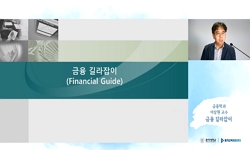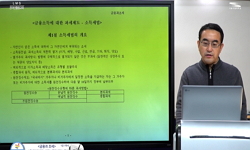최근 한 저축은행의 코어시스템이 약 25개월간의 SI 프로젝트 기간을 거쳐 차세대 시스템을 오픈했지만, 시스템 오류·서비스 지연 발생 등의 문제로 종전 구형 시스템으로 회귀하는 사태가 ...
http://chineseinput.net/에서 pinyin(병음)방식으로 중국어를 변환할 수 있습니다.
변환된 중국어를 복사하여 사용하시면 됩니다.
- 中文 을 입력하시려면 zhongwen을 입력하시고 space를누르시면됩니다.
- 北京 을 입력하시려면 beijing을 입력하시고 space를 누르시면 됩니다.
패키지기반 글로벌 코어뱅킹 구축사업RFP 사례연구 = A Case Study of a Package-Based Global Core Banking System Implementation RFP
한글로보기https://www.riss.kr/link?id=T17143364
- 저자
-
발행사항
서울 : 숭실대학교 대학원, 2024
-
학위논문사항
학위논문(석사) -- 숭실대학교 대학원 , IT정책경영학과(일원) , 2025. 2
-
발행연도
2024
-
작성언어
한국어
- 주제어
-
발행국(도시)
서울
-
형태사항
102 ; 26 cm
-
일반주기명
지도교수: 김명호
-
UCI식별코드
I804:11044-200000845599
- 소장기관
-
0
상세조회 -
0
다운로드
부가정보
국문 초록 (Abstract)
최근 한 저축은행의 코어시스템이 약 25개월간의 SI 프로젝트 기간을 거쳐 차세대 시스템을 오픈했지만, 시스템 오류·서비스 지연 발생 등의 문제로 종전 구형 시스템으로 회귀하는 사태가 발생하였다. 이후 5개월 간의 추가 보완개발을 통해 정상적으로 시스템 가동에 들어갔으나, 이는 시스템을 오픈하자마자 곧바로 구형 버전으로 되돌린 매우 이례적인 사 례로 남아 있으며, 은행시스템의 사용자 수백만 명의 업무 불편은 물론, 프로젝트 기간 연장으로 인해 천문학적인 추가 비용이 발생하여 뉴스에 서도 크게 이슈화된 바 있다. 미션 크리티컬 시스템(Mission Critical System)은 정상적으로 작동되 지 않거나 파괴되면 업무 수행 전체에 치명적인 영향을 미쳐 조직이나 사회에 재앙을 가져올 수 있는 특성 또는 상태를 말한다. 온라인(Online) 비즈니스 회사의 통신 시스템이나 재난 안전 통신망, 항공기 운항 관제 시스템 그리고 IT 정보 제공 회사의 데이터베이스 시스템 등이 이에 해 당하며, 은행의 핵심 IT시스템을 지칭하는 코어뱅킹 시스템은 국내 금융 IT를 대표하는 시스템이며 미션 크리티컬 시스템의 정점에 서 있다. 국내 금융 IT는 코어뱅킹 시스템의 발전과 함께 해왔다고 해도 과언 이 아니다. 90년대부터 시작된 차세대 프로젝트는 이른바 빅뱅 방식이라 고 부르는 방식으로, 시스템을 가장 기초적인 아키텍처 설계부터 인프라 시스템 및 어플리케이션 구축까지 SI(System Integration) 프로젝트 방 식으로 수행하는 방식을 말한다. 최근에는 빅뱅 방식에서 MSA(Micro Service Architecture) 방식으로 바뀌는 추세이나, 여전히 SI 프로젝트는 IT시스템을 구축하는 가장 대표적인 방식이며, 국내 코어뱅킹 시스템의 발전은 SI 프로젝트 시장 및 기술의 발전과 함께하였고, 이는 곧 국내 금융 IT의 큰 발전을 이끌어 왔다. 그러나, 현재 해외 시장은 패키지 소프트웨어가 그 중심을 차지하고 있다. 대형 은행의 코어뱅킹 시스템을 구축할 때에도, 패키지 소프트웨어 를 기반으로 구축하는 것이 훨씬 더 일반적이며, 이는 국내 금융 IT 시 장과는 큰 차이를 보인다. 이로 인해, 국내 IT 기업이 해외 시장에 진출 시 가장 어려움을 겪고 있는 문제점 중의 하나가, 이러한 시스템을 구축 하는 방식의 차이에 있다. 이는 발행되는 프로젝트 RFP부터 패키지 기 반의 구축을 기준으로 내용이 제시되며, 이에 대한 준비가 충분하지 않 을 경우 제안프로젝트부터 어려움에 맞닥뜨리게 된다. 이에 본 논문에서는 프로젝트 수행의 가장 근간이 되는 자료인 RFP를 중심으로 하여, 패키지 기반의 코어뱅킹 구축 사업 RFP에 관한 사례연 구를 통해, 패키지 기반 프로젝트 RFP 형식과 그 요구사항의 내용구성 을 분석하여, 국내 소프트웨어 기업들의 해외 시장 진출과 국내 패키지 소프트웨어의 발전요소들을 도출하고자 한다.
다국어 초록 (Multilingual Abstract)
Recently, a savings bank opened a next-generation core system after approximately 25 months of an SI (System Integration) project. However, due to system errors and service delays, the bank reverted to its previous legacy system. Although the system r...
Recently, a savings bank opened a next-generation core system after approximately 25 months of an SI (System Integration) project. However, due to system errors and service delays, the bank reverted to its previous legacy system. Although the system resumed normal operations after an additional five months of supplementary development, this case remains an extremely rare example of reverting to an older version immediately after launching a new system. This situation caused significant inconvenience to millions of banking system users and resulted in astronomical additional costs due to the extended project duration, garnering extensive media attention. A Mission critical system refers to a system or state that, if not functioning properly or destroyed, can have catastrophic impacts on overall operations, potentially causing disasters for organizations or society. Examples include communication systems for online businesses, disaster safety communication networks, air traffic control systems, and database systems for IT information providers. Among these, the core banking system, which is the core IT system for banks, represents the pinnacle of Mission critical systems and serves as a hallmark of domestic financial IT infrastructure. The development of domestic financial IT has closely paralleled the advancement of core banking systems. Starting in the 1990s, next-generation projects have often employed a "big bang" approach, which entails building systems from fundamental architectural design through to infrastructure and application development, all within the framework of SI projects. While there is a growing shift from the big bang model to MSA (Microservice Architecture), SI projects remain a representative method for IT system implementation. The evolution of domestic core banking systems has been intertwined with the development of SI project markets and technologies, driving significant progress in domestic financial IT. However, in the global market, package software has become the predominant approach. Even when implementing core banking systems for major banks, package software-based systems are far more common, representing a stark contrast to the domestic financial IT market. Consequently, one of the greatest challenges faced by domestic IT companies entering the global market is the difference in system implementation methodologies. RFP(Request for Proposal) for projects are typically structured based on package-based implementation, and without adequate preparation, domestic companies face difficulties from the proposal stage. This master thesis focuses on RFP, the foundational documents for project execution, and conducts a case study of package-based core banking system implementation RFP. By analyzing the structure and requirements of package-based project RFP, this research aims to identify key factors for domestic software companies' entry into global markets and foster the development of domestic package software.
목차 (Table of Contents)
- 제1 장 서론 1
- 1.1 연구목적 및 배경 1
- 1.2 논문의 구성 3
- 제2 장 이론적 배경 4
- 2.1 금융산업 패키지 소프트웨어 4
- 제1 장 서론 1
- 1.1 연구목적 및 배경 1
- 1.2 논문의 구성 3
- 제2 장 이론적 배경 4
- 2.1 금융산업 패키지 소프트웨어 4
- 2.1.1 소프트웨어 산업의 현재 4
- 2.1.2 금융산업 소프트웨어의 특성 8
- 2.2 코어뱅킹 소프트웨어 11
- 2.2.1 국내 금융 IT 발전과정 11
- 2.2.2 코어뱅킹 시스템의 특성 13
- 2.3 패키지 기반의 프로젝트 수행 방법론 16
- 2.3.1 SI(System Integration) 기반의 프로젝트 수행 특성 16
- 2.3.2 패키지(Package) 기반의 프로젝트 수행 특성 18
- 2.3.3 글로벌 코어뱅킹 프로젝트 동향 21
- 2.4 코어뱅킹 RFP(Request For Proposal)의 정의 23
- 2.4.1 ISO/IEC/IEEE 29148 요구사항 엔지니어링 23
- 2.4.2 제안 절차에서의 RFP (Request For Proposal) 25
- 제3 장 연구 방법 32
- 3.1 연구 개요 32
- 3.2 연구 대상 32
- 3.3 자료 수집 및 분석 방법 33
- 제4 장 RFP 연구결과 34
- 4.1 RFP 사업 배경 34
- 4.1.1 사업 배경 34
- 4.1.2 사업목적 35
- 4.1.3 사업 일정 35
- 4.2 RFP 구조 37
- 4.2.1 RFP 구성요소 37
- 4.2.2 RFP 메뉴구조 38
- 4.3 RFP 내용 41
- 4.3.1 약어의 정의 41
- 4.3.2 Commercial Proposal 43
- 4.3.3 Business/Functional Requirements 45
- 4.3.4 Reference Site Call 50
- 4.3.5 POC Use Cases 50
- 4.3.6 Partner (System Integrators for the Implementation) 52
- 제5 장 결론 및 시사점 54
- 5.1 연구결과 요약 54
- 5.2 연구의 함의 55
- 5.3 제언 및 논의 56
- 참고문헌 57












